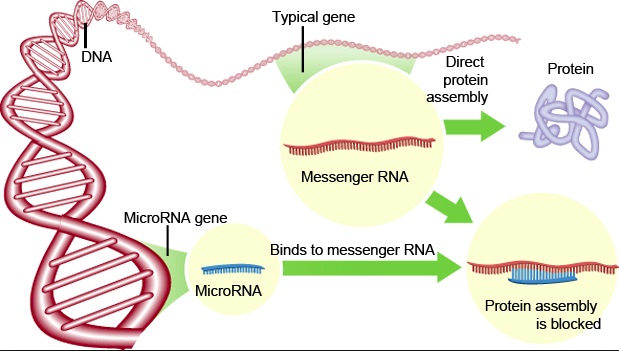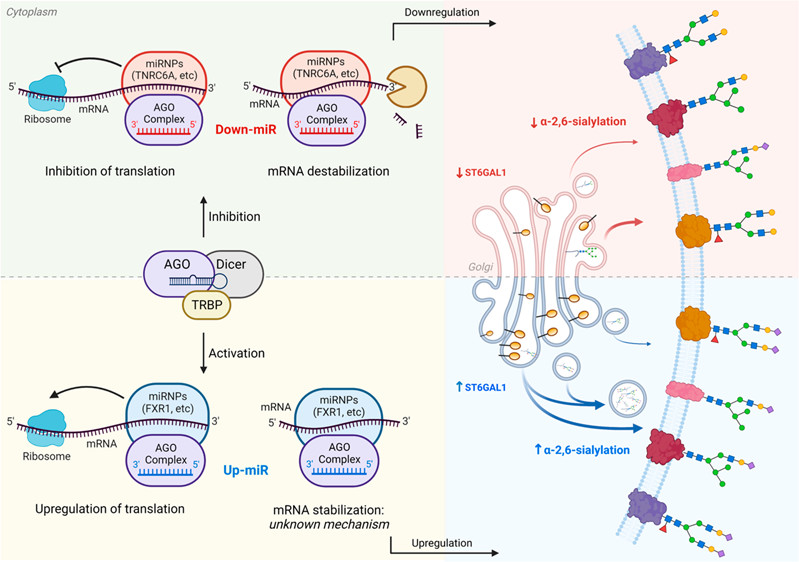Understanding the Role of Micro RNAs in Up and Down Regulation of Protein Synthesis and Gene Expression
Micro RNAs exert significant influence on our cells and ultimately our health. Our understanding of these short ribonucleic acids segments has continued to evolve since their discovery in the early 1990s. Unlike messenger RNA (mRNA) which typically mediates the expression of a specific protein, the role of micro RNA (miRNA) has been less clear. The scientific community has made great progress in understanding how miRNAs are produced within cells, how they exert regulatory effects on gene expression, and how they are involved in various physiological and pathological events. “It is now clear that miRNAs are powerful gene regulators, and that they not only help control mRNA stability and translation but are also involved in transcription. However, our understanding of when and how miRNAs can exert regulatory effects on transcription is limited.” (O’Brien, J. et al., 2018).
In 1998, the American scientists Andrew Fire and Craig Mello published their discovery of a mechanism which, with the help of targeted miRNAs, can degrade mRNA from a specific gene and prevent their translation. The two scientist received a Nobel Prize for their discovery of RNA interference in 2006. This mechanism has since been used for hundreds of studies focused on understanding the suppression of genes mediated by miRNA molecules.
In early 2000s there were a few findings indicating that in some cases miRNAs can also enhance or upregulate gene expression but this was considered to be rare and limited to idle cells. However, in a recent publication, Dr. Faezeh Jame-Chenarboo and her team discovered prevalent evidence which indicates that miRNAs amplify gene expressions more frequently than was previously thought (Jame-Chenarboo, F., et al., 2022). This discovery is significant as it now indicates that there are two different and major modes of miRNA regulation (see illustration below).
For differential gene expression research, traditionally mRNA profiling assays using Next Generation Sequencing (NGS) were often preferred. However, with the above evidence it is now clear that miRNA NGS profiling can complement and enhance the discoveries focused on transcriptome regulation.
There are currently several technologies available for miRNA and mRNA profiling; however one particular ultra-efficient workflow allows for profiling both types of molecules using the same sample lysate.
The novel extraction-free sample preparation technique allows for a number of validated sample types (see table below) to be processed using HTG Transcriptome Panel (HTP) and HTG EdgeSeq miRNA Whole Transcriptome Assay (WTA) from the same lysate. This enables researchers to generate comprehensive mRNA and miRNA transcriptome data simultaneously, thereby saving time, reducing sample consumption, and minimizing tissue sectioning bias.
The expanded understanding of the miRNA regulatory landscape and the availability of comprehensive RNA transcriptome profiling tools opens new possibilities for understanding mechanisms that modulate protein expression and and thus developing better and more personalized diagnostic and treatment tools for patients suffering from a variety of ailments.


